A Connection with Nature is Good For Us
Whether you’ve a small garden or a huge estate, there are lots of things we can do to give nature a helping hand. What’s good for nature is also good for the mind, spirit and soul. Unsurprisingly, nearly every wellbeing study has concluded a connection with nature is good for us. What better way to enjoy wildlife than in your own garden?
There’s plenty of doom and gloom stories about the state of British wildlife being in decline, mostly as a result of habitat loss. Check out the Making space for Nature report written by John Lawton for the government in 2010. But the great news is that we can all do something about it.
Ease up on Mowing the Lawn
Believe it or not, some of our most bio-diverse habitats are grasslands. You’ll be amazed by the species that are attracted to your ‘wildlife meadow’.
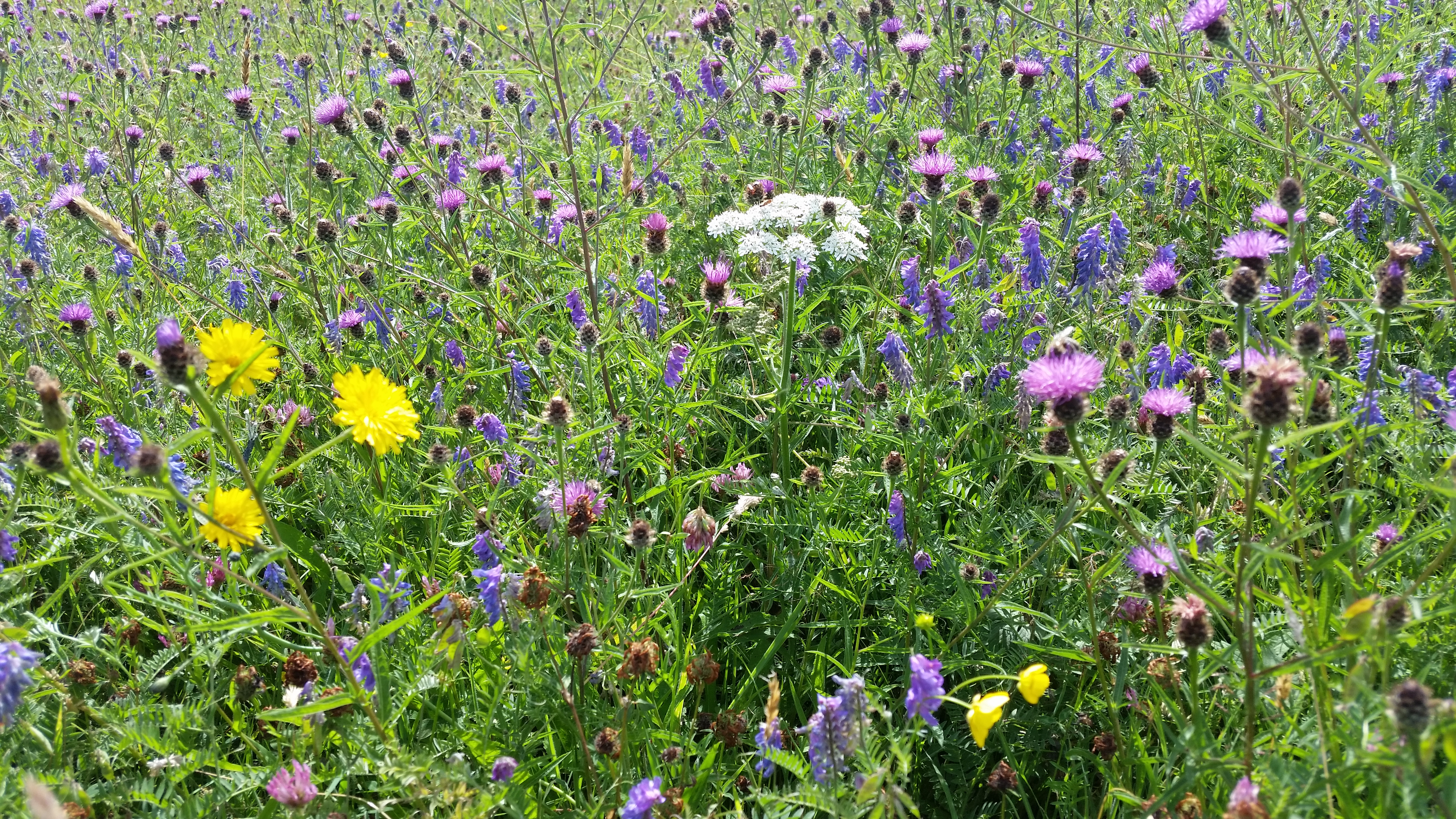
When I say meadow, it could just be a small patch of grass that’s a bit fiddly to mow. Pick an area that you’d rather not mow and let it grow. You can give it a head-start by sprinkling a wild flower mix over it especially if that mix includes yellow rattle. Other than that, kick-back with a summer drink and let it do its thing. Over time you’ll get all sorts of flowers, herbs, vetches and grasses popping up, which in turn will feed all sorts of creepy-crawlies alongside the birds and bats.
Don’t fertilize it. Cut and remove the grass/flowerheads at the end of the season. Check out my blog for more info.
Helping our Feathered Friends
An obvious place to start is with some bird feeders. Something as cheap and simple as a mesh nut feeder in front of your window will attract our common birds. As your enthusiasm grows, you can get all sorts of bird-food dispensers, with differing seeds and feeds to attract even more species to your living room window.

Wild Bird Feeding Station with squirrel baffle
Add nest box or two and you’re really doing your bit to help out our feathered friends.
Going Batty
If you’re putting up bird boxes, bat boxes are a great addition. The simple Kent bat box is easy to make, self-cleaning and great for bats. Bats are fairly picky when it comes to temperature and humidity, so if you can put three on one tree that face various directions, there’s a chance they will use one or another. They sometimes move from one to another during the day. Bats are great to watch against a moonlight sky.
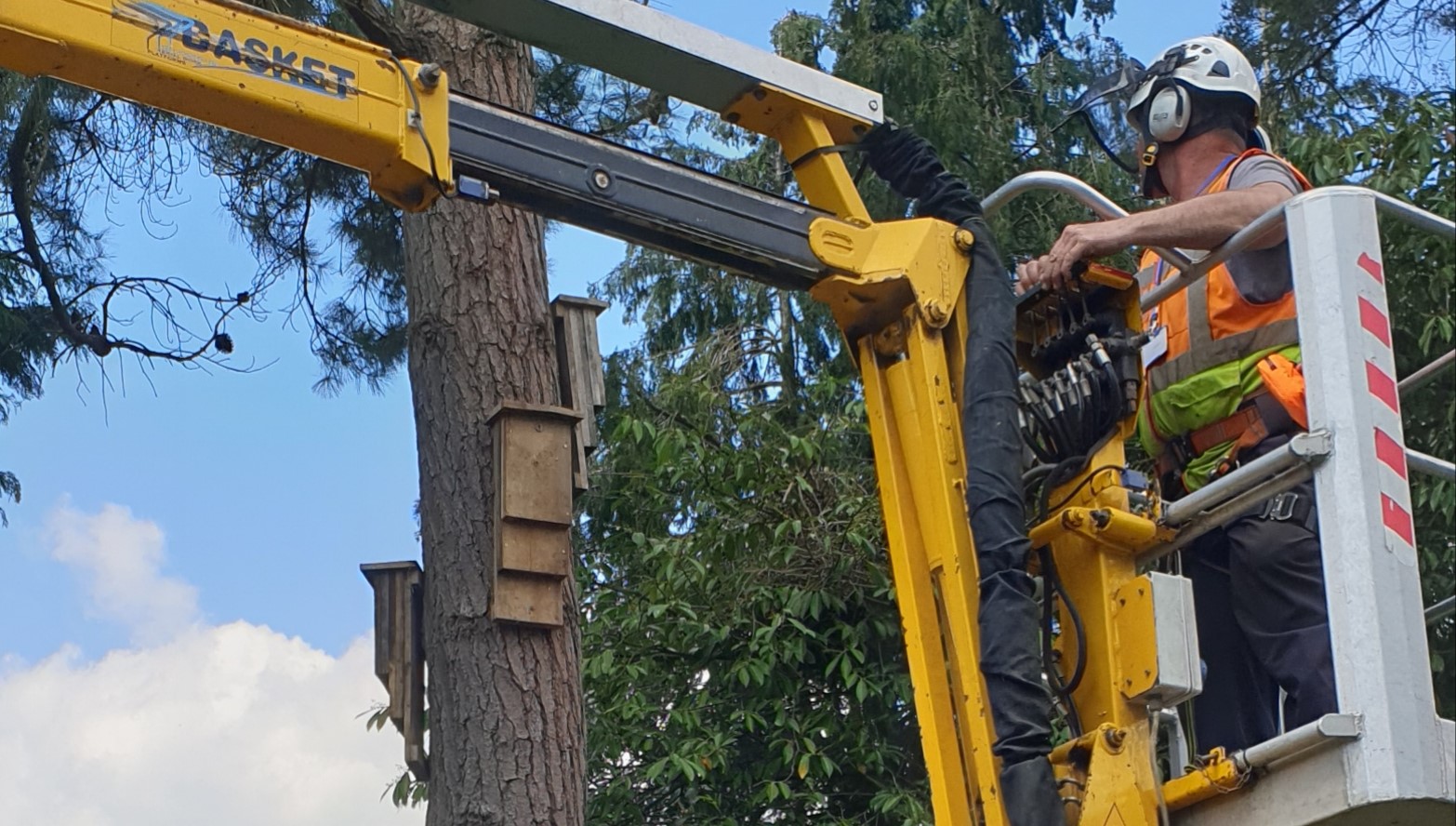
Splish-Splash!
A little water is worth its weight in wildlife gold, whether it’s the size of a washing-up bowl or a fully-fledged pond. Very quickly a little water will attract dragonflies, pond skaters, diving beetles as well as giving your birds a place to drink. We can help you build a hibernaculum, which will improve your chances of seeing toads, frogs and newts.
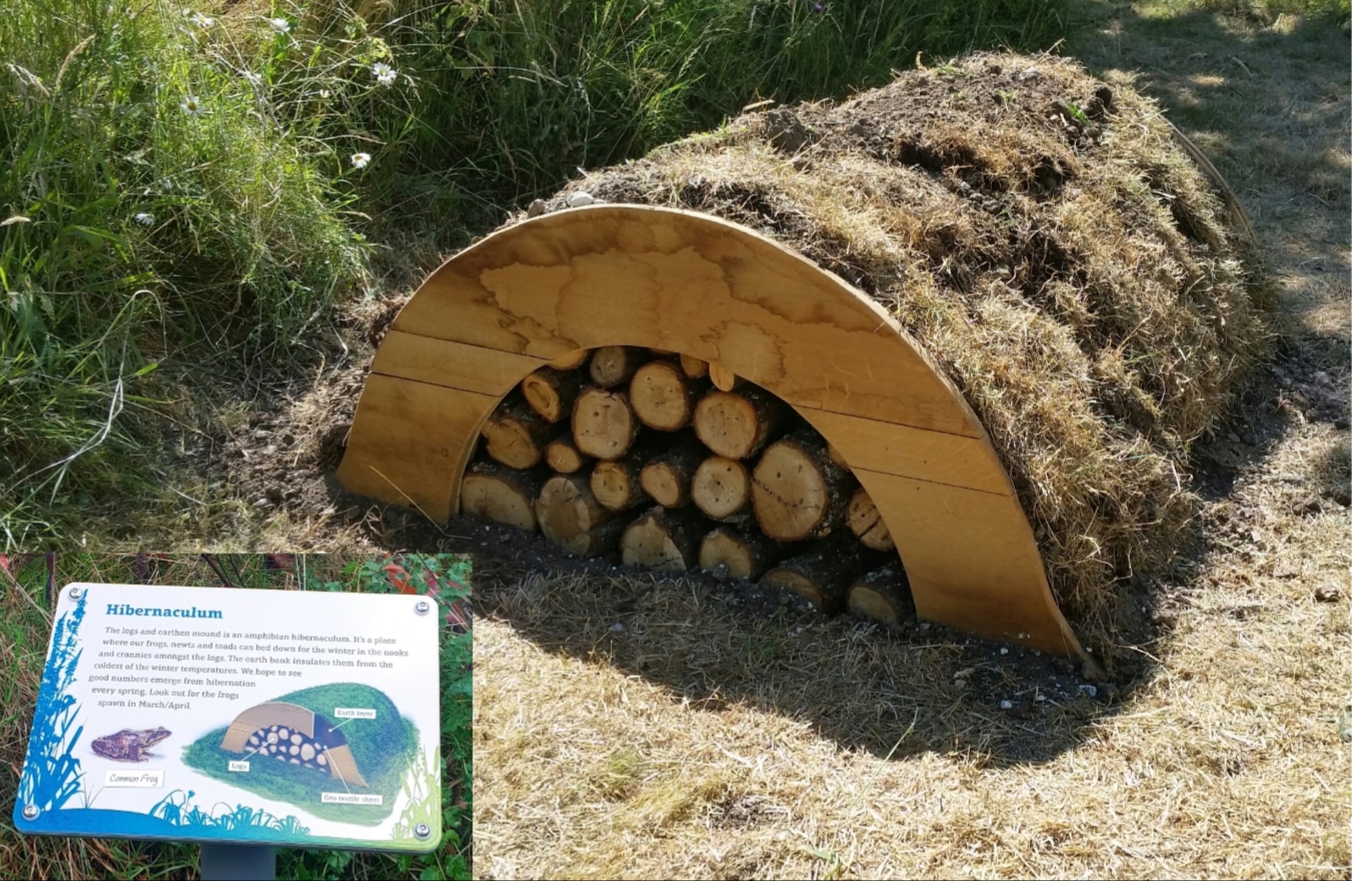
Amphibian hibernaculum for a wildlife friendly garden
Frogspawn is one of those amazing early signs of spring and great for getting children enthused about nature.
Nectar is the Drink of the Gods
Ordinarily, I’d say plant native species every time. Native species generally support more wildlife than imported ones because they’ve evolved together over thousands of years. However, I will break that rule if it’s to provide a good pollen and nectar source in the early spring or late summer when there’s not much about in the British countryside. Our gardens can be an amazing food source for pollinators like bees and flies that are really struggling. Chose plants that bloom early or late. Bees and butterflies just adore buddleia. Vetches and clovers are also good as the longer tongued bees make use of them.
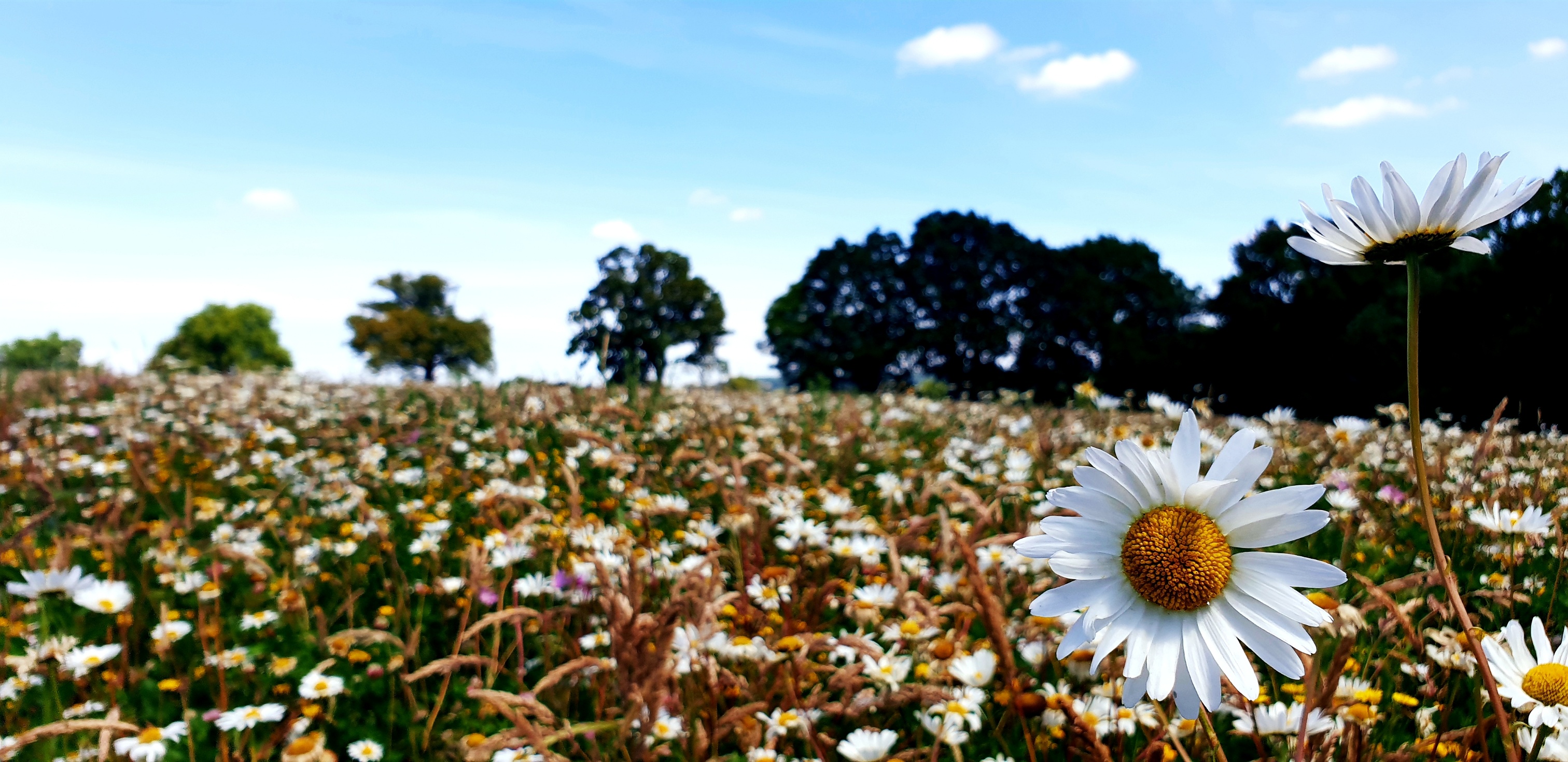
The Creepy-Crawlies
The food chain starts at the bottom. If you can provide something for the bugs and beetles there’s food for lots of other species. Dead wood is great for this. A stumpery or habitat stack is basically a variety of different types of wood partially dug into the ground. This allows micro-organisms like fungi and bacteria to break the wood down as well as giving things like centipedes, millipedes, beetles, woodlice etc a home. If you’re really lucky you might get amazing creatures like stag beetles in there. Drill some holes into your wood for solitary bees and insects.
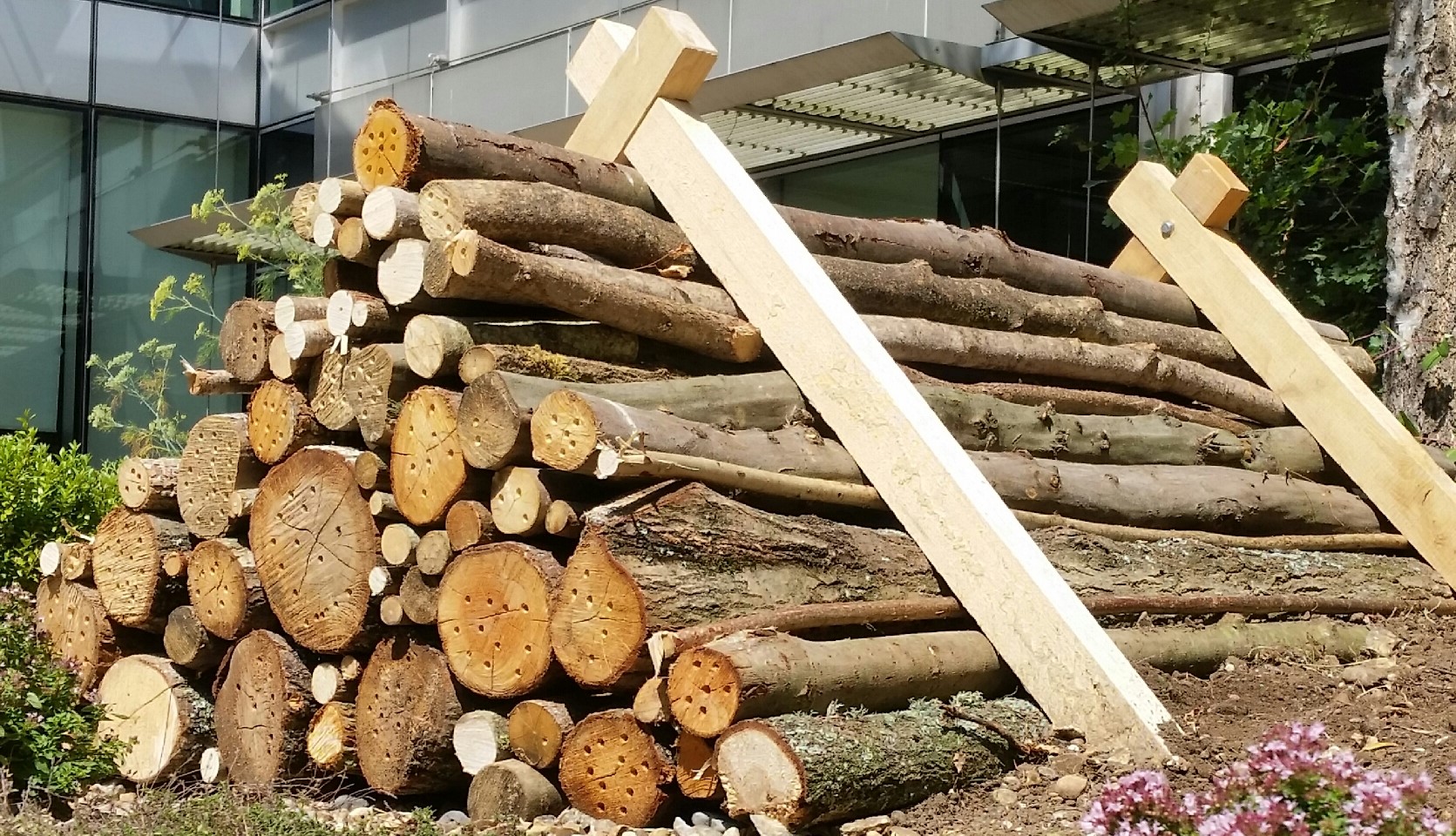
Habitat stack
A bug hotel is basically a cavity stuffed with different types of wood and lots of holes, nooks and crannies for insects to lay their eggs. Big or small, they are all great for insects. It’s a mini-world of adventure in these things and they are amazingly textured and interesting on the eye. A great piece of wildlife art for the garden.
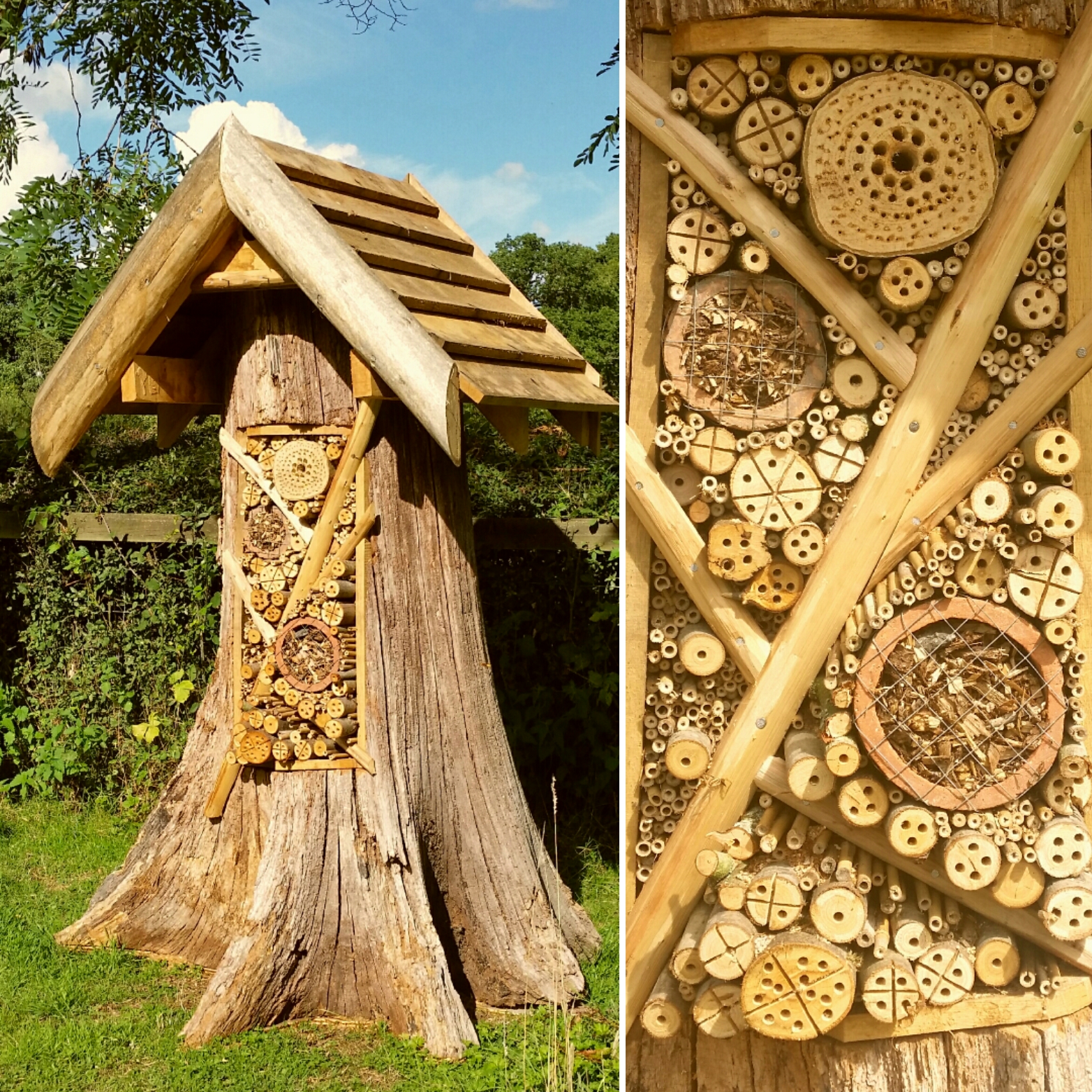
Des-Res Bug Hotel – see blog
Fencing or hedges?
Hedge, hedge, hedge every time! Plant native berry producing hedging like hawthorn, blackthorn, holly, privet etc. Hedges produce lots of winter food for our native and migrant birds. Don’t trim them too often and never trim them all at once. Ideally trim one side one year and the other side the next. Better still if you can bear three years growth on your hedge as these stems grow the most berries. Avoid trimming in the nesting season or before the berries have been eaten by overwintering birds. Early March is ideal.
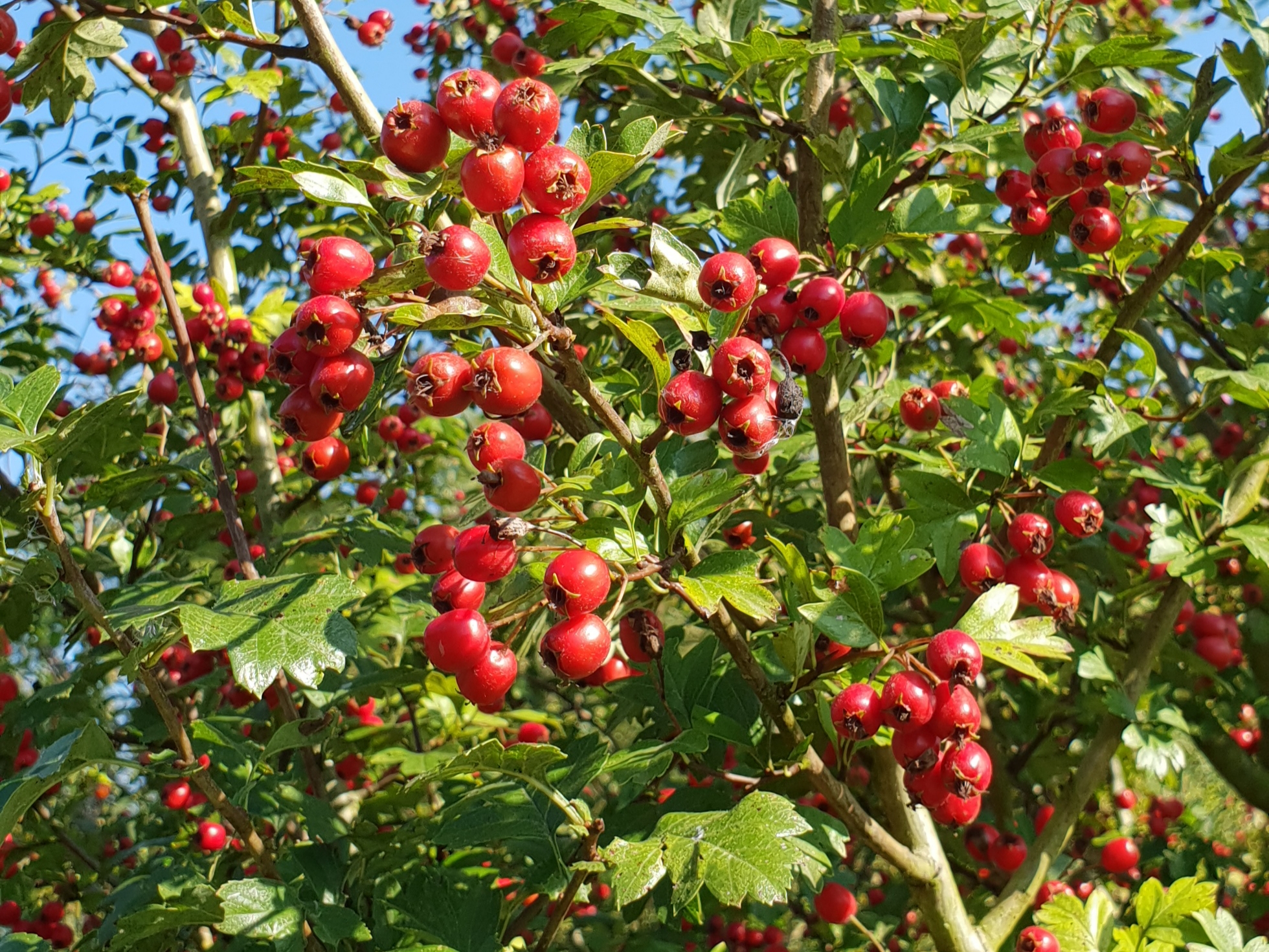
Hawthorn Berries
Hello Mrs Mrs Tiggy-Winkle
If you’ve got everything right, the nocturnal star of the show has to be the gardener’s best friend, the hedgehog. They will snuffle through your garden eating those slugs that might otherwise munch through your tender plants. Build them a home to hibernate in and chill-out during those long summer days. Make a feed-station to keep them is good health as well as a place to spot them in of an evening.
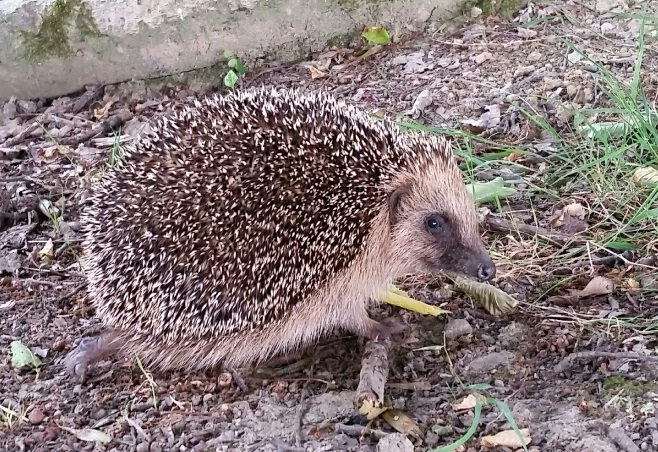
So whether it’s meadows, bug hotels, bird boxes, hedgehog housing, planting plans, ponds and hibernaculum, there’s lots of ways for you to attract and support some of Britain’s best wildlife. Install sneaky wildlife cameras so you don’t miss out on things like birds nesting or hedgehogs shuffling by. Your friendly team at Conservation and Access are happy to help you with all your wildlife garden needs.